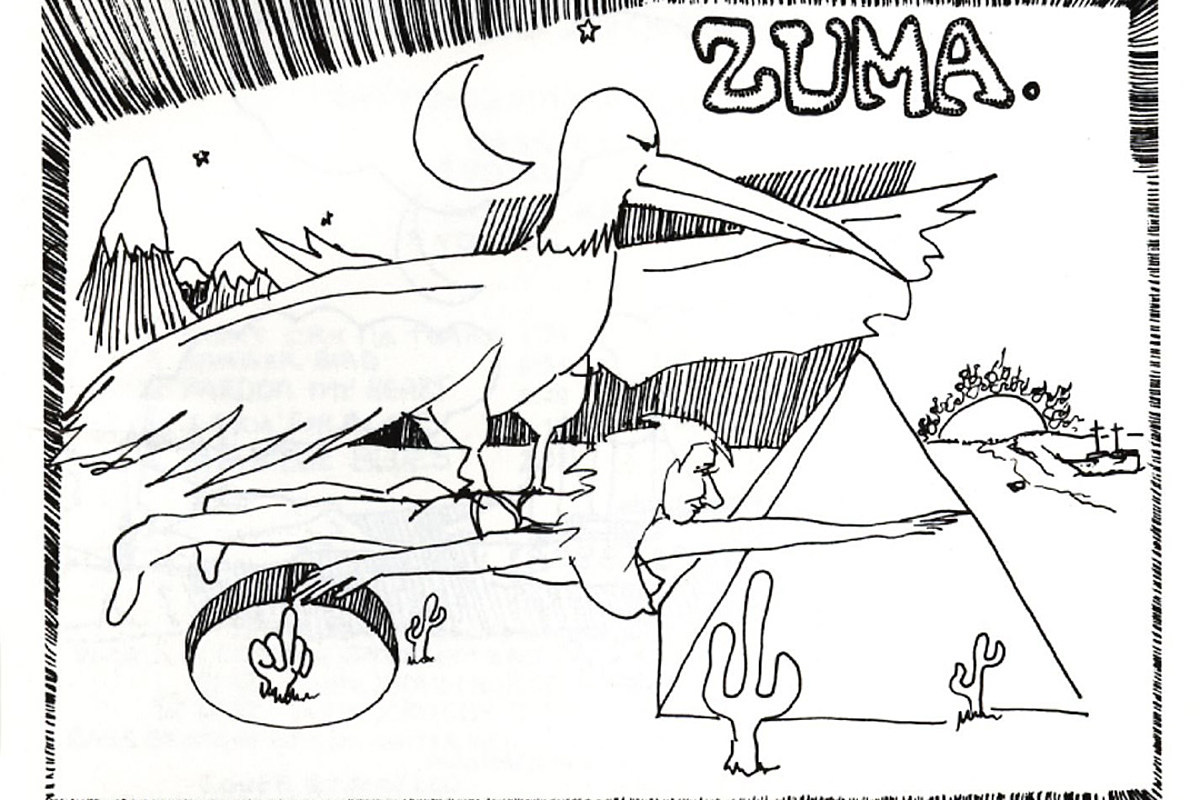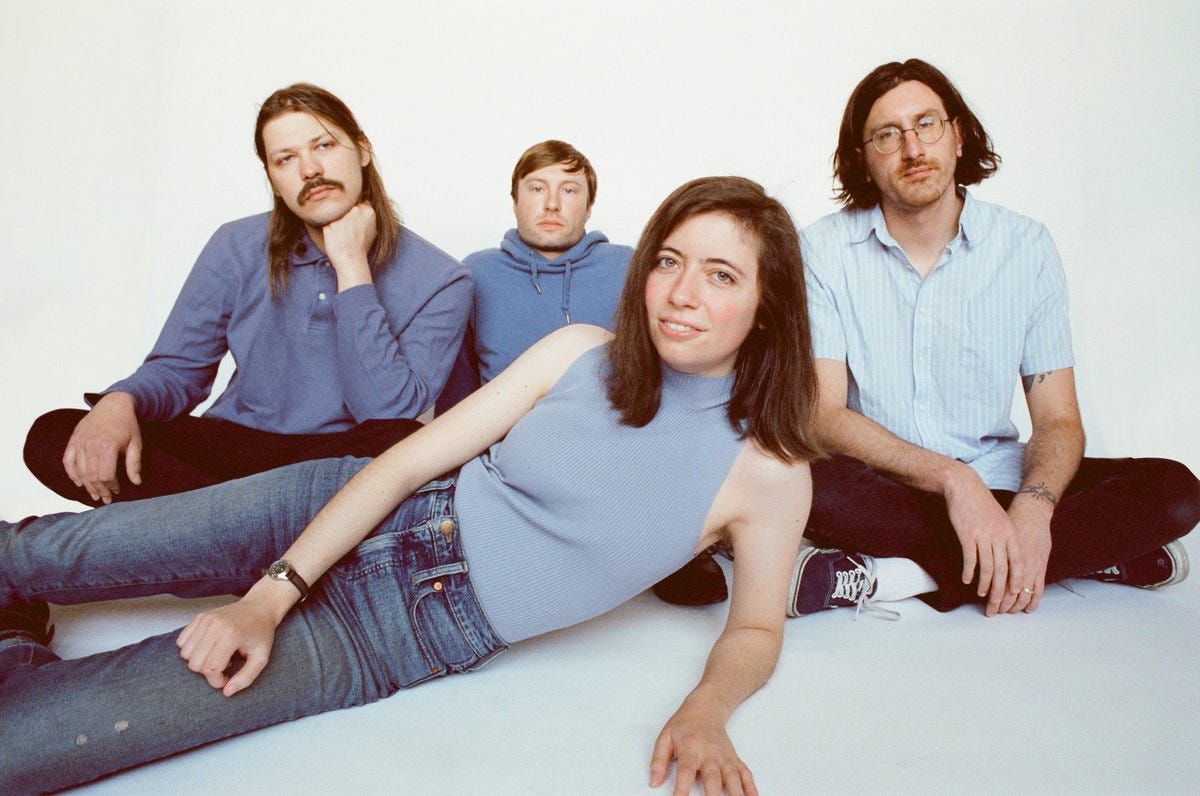Weekly Neil: Don't Cry No Tears, With Ratboys' Dave Sagan
The guitarist explains why the jangly tune reminds him of John Mellencamp
This is Weekly Neil, a newsletter about Neil Young. This week, I’m very pleased to feature a conversation with Dave Sagan from the Chicago band Ratboys about “Don’t Cry No Tears.” The song kicks off Zuma, the guitar-heavy 1975 album Neil made with Crazy Horse, which Dave loves. It makes sense: Dave is an incredible guitar player, and with Ratboys, he’s made some incredible guitar songs. Ratboys’ new album, The Window, is out this Friday, August 25. It features my favorite song of the year, “Black Earth, WI.” A big part of why it rules is Dave’s long guitar solo, which we get into below.
Dave Sagan and Julia Steiner met as incoming freshmen at the University of Notre Dame, and by the fall of their first semester, they were writing songs together. But the Catholic college’s rules kept them apart after hours in the dorms, so they played music in the chapel and the laundry room — wherever they could. Thirteen years later, as the country-tinged, garage-influenced band Ratboys, they’ve released many more great songs whose origins are equally charming. For 2020’s Printer’s Devil, they trekked back to Steiner’s childhood home in Kentucky before her parents sold it; The Window, out later this week and as produced masterfully by Chris Walla, finds them chasing storms and reflecting on the inevitability of grief.
Steiner’s lyrics and plaintive voice pair perfectly with Sagan’s guitar work, exploratory but always serving the song. It’s how you get the bite of an Antarctic journey and the mellow twang of a song about intrusive thoughts in the same catalog. And it’s how “Black Earth, WI” finds Sagan unspooling all sorts of guitar heroism for several minutes without losing the plot. The songs are solid, Sagan is always game, and he’s partly got Neil’s influence to thank for that.
Dave Sagan: Funny story. So this song, “Don’t Cry No Tears,” I’ve been kind of covering with another group I play in with with [Ratboys drummer Marcus Nuccio] and our friend Geoff. We kind of cover it in more glammy KISS style, but one day, we were just kind of practicing, jamming in the basement, and [Geoff] started playing it. I was like, “Do you have words for this one?” I honestly didn’t know what song he was playing at first. And then it took until we got to the end of the song, like, “What was that? That’s not your song. Is it?”
I do really love Zuma. I think I love the Crazy Horse side of Neil more. But at the same time, the song is a bit of an outlier on that record, because it’s just so simple and it flows.
Weekly Neil: As a guitar player, are you drawn more to the noisier, longer Crazy Horse jams and all that stuff?
Dave: I didn’t really start listening to Neil in depth until college and I really got into his longer jams like “Cowgirl In The Sand” and “Cortez [The Killer],” so I really was kind of trying to find what I wanted to do on guitar. I played bass as a teenager and then switched into guitar mode sometime around 19 years old. I feel like, yeah, it was his noisy jams. His style of soloing was kind of hinting at what I wanted to do.
Photo by Alexa Viscius
WN: Those longer songs, “Cowgirl” and “Down By The River,” they’re basically just two-chord songs, so you really can throw them on and jam for a long time.
Dave: Garage rock classics. Just pick it up and play with anybody’s dad. At the same time, being exposed to more styles and just listening to more music, as a music enjoyer in general, there’s a lot to kind of love in his early stuff. Throughout the record Everybody Knows [This Is Nowhere], it’s a country record but it’s got totally the hard rock thing. I guess that was the seed of it, in that record.
WN: It’s funny you mention “Don’t Cry No Tears” in a glammy arrangement. I’d have to hear it, but what makes it glammy when you play it with them?
Dave: The chords that Neil picked for them, they’ve got this kind of open second and nine chord. [Dave sings the riff] It resolves down. That’s not a Neil Young move, but I think that’s a move that set him up as future-proofing because it’s a kind of sound that you start hearing a lot throughout the later ‘70s and the ‘80s. John Mellencamp uses it all the time. It’s the “Hurts So Good” thing. Just like that kind of ‘80s arena rock. This kind of guitar playing, this chord change, anticipated it without even calling attention to itself. When we’ve been covering it, we took another guitar move, which is more AC/DC inspired. Taking the slider on the hard rock scale and pushing it a little bit further.
WN: What I love about Zuma is that Neil’s worked through some grief in the Ditch Trilogy albums, and this is the first one where he’s out of that dark hole. This song in particular, it really is so bright and sounds happy and like Neil’s in healthy place.
Dave: Yeah. Sounds like he’s having a really great time with the band, too. I don’t know if this is right, but I think this was like probably one of the first times that he recorded everything live on the floor. He’s just really kind of letting stuff happen in Zuma. I think it’s really informative in a not so obvious way to what he’s going to do later.
WN: This song is a reworked version of one he had with his band The Squires when he was a teenager called “I Wonder.” They played it a little surfy in an early rock and roll style in the mid-’60s, before he was in Buffalo Springfield. He claimed that this was actually the first time he’d ever sang in a studio. It’s interesting to hear that, too, because Zuma is much looser. There’s a little more soul.
Dave: When it’s your first time in the studio making a track that’s gonna exist forever, you’re really, really thinking about it. Neil is no stranger to re-recording old tracks and revisiting older songs in a different way. I think he just wasn’t thinking about it so much [on Zuma].
WN: That’s the kind of insight that somebody like you would have, as someone who does this. You’ve been there, you’ve been in studio, you’ve thought about that. You guys revisited stuff for Happy Birthday, Ratboy, too. Was that a similar experience?
Dave: Yeah, I think so. That’s a great point. Just without even really thinking about it, but yeah, I’ll tell you we were so much more comfortable with these songs because I kind of knew how they go, the vision. You’re working with people who you’re really comfortable with, just all friends from Chicago. So yeah, I guess we were kind of chasing that a bit. When you step into a studio, you gotta trust that, oh, this isn’t going to be my first and only time. I’m going for it. I want to be in the studio as much as possible. You kind of lose your apprehension the more you do it.
WN: “Black Earth, WI” is my favorite song of the year so far. It’s eight minutes and thirty seconds, and your guitar solo takes up about three minutes of that. We’re talking about Neil — it seems fitting to segue into this. How did that go? I mean, how spontaneous was that one?
Dave: Julia brought us a verse and a bridge verse, that little bit at the end, into practice, and we just started playing these parts, seeing what what could come out of it. The first couple of times we played through it, there’s kind of a lull in the vocals because we only had one part ready for that, so it kind of came about naturally. We’re like, okay, we’re groovin’. [Ratboys bassist Sean Neumann] hopped into this great, great bassline, and we were like, let’s keep going. Let’s see what happens. Let’s go into some guitar stuff. And it kind of just ramped up in the most natural way. Maybe the first or second time we played it, we were like, yeah, I think that’s how the song should go. The guitar solo just belongs there, fills the space. It feels like we’re jamming on the floor, which honestly we were.
When it came time to record, it was exactly the same. We were recording most of the record live on the floor with Chris, and that song, we had an idea of how long to make it and how long the guitar solo was going to be. But when it came time, I thought, I just gotta go for it. Give a good one. I’m not going to be a perfectionist. Maybe four years ago or something I would have been editing that guitar solo into oblivion. The magic of like playing it live and getting through it with everybody was enough that we were like, this is 100% the vibe.
WN: When you met up with Chris to record, he said this is gonna be a 24-day thing, which is much longer than you’d previously ever done. What what does having that kind of time allow for?
Dave: One of the important things we realized from that having that much time is we built in time for breaks. If you’re in a studio for 12 hours every day slamming your ears, you tend to lose sight and kind of get too zoomed in. It was 24 days away from home. So you know, we’re losing money being somewhere else. But we really needed it. Every time after coming back into the studio after a day or two break, we’d just kind of open it up and get a couple of new ideas. It’s like tearing down the Lego set at the end of the day, putting it back in the box, and then when you take it out again, you put it back together twice as fast. A lot more familiarity and a lot more clarity. Also, with that amount of time, we definitely used as much of the gear in the studio as we could, all in amazing ways.
WN: The Lego analogy is really illuminating. You’ve been through it, you know the moves, and you know it all inside and out.
Dave: Even athletes need the weekend. We did The Window live on the floor, and that was our first time kind of trusting our band members. We kind of let go of the reins on this one. We were like, “Let’s build this together, guys.” And I think that’s what Neil was doing on Zuma. He had a lot of trust in the process, and he didn’t overcomplicate or control anything too much. It’s probably my favorite. We’re a rock band, and we’re inspired by the granddaddy of the rock bands.
Ratboys’ new album The Window is out Friday. Pre-order it on Bandcamp for $10.
“Don’t Cry No Tears,” written by Neil Young, from Zuma (1975)
Neil Young: vocals, guitar
Frank Sampedro: guitar
Billy Talbot: bass, vocals
Ralph Molina: drums, vocals



